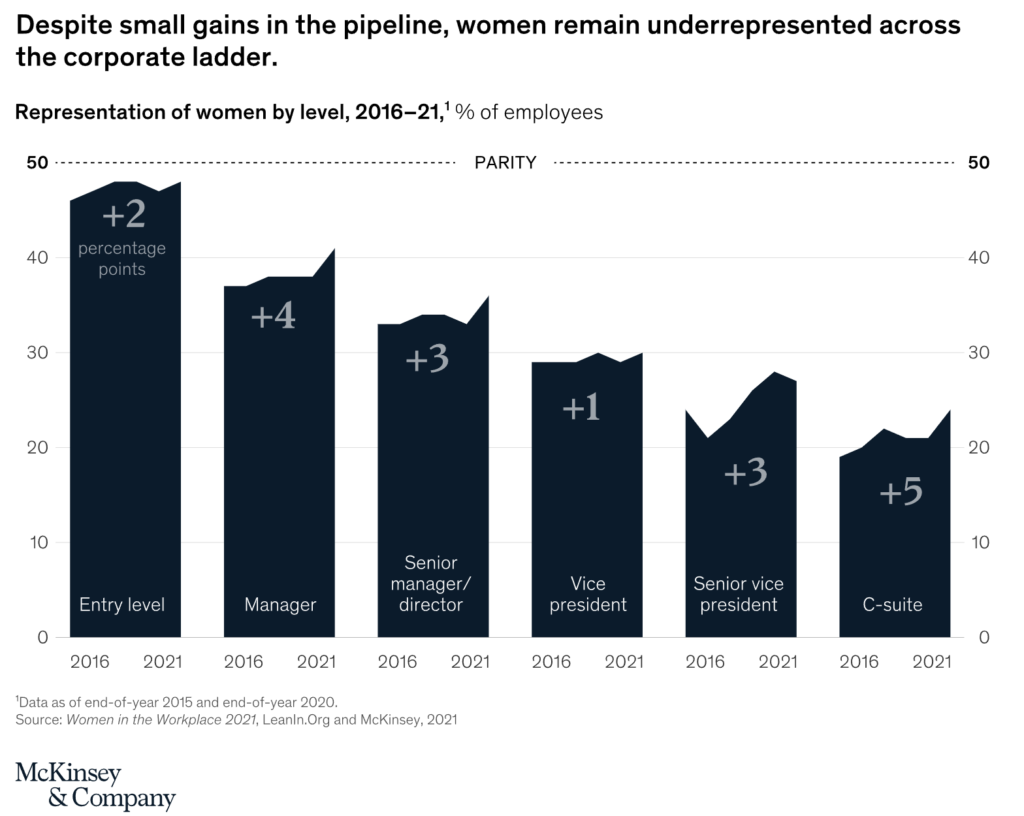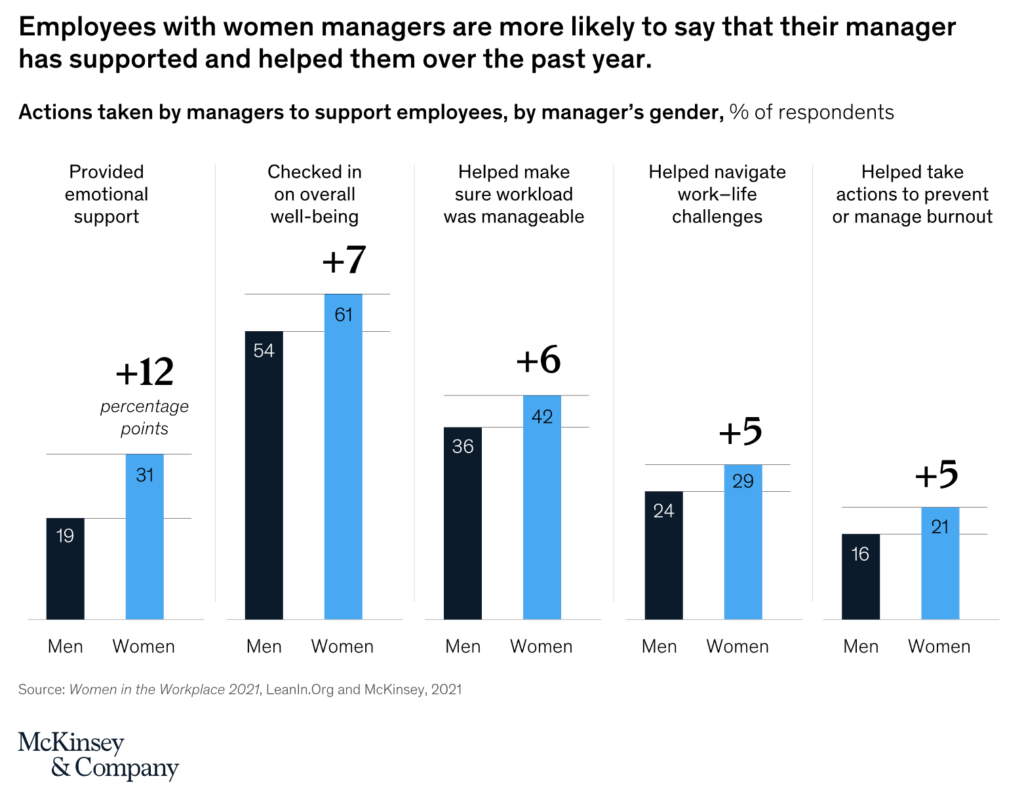
Despite being stressed and exhausted, women are taking on more leadership responsibilities, and yet their work remains unrecognized. These are the main conclusions from McKinsey’s 2021 Women in the Workplace report, which, despite the huge challenges brought on by the pandemic, feels very much like the same story, different day.
Women’s representation across the corporate ladder grew in 2021, but women are still underrepresented at every level and progressively more at every step. The drop-off is fueled by disparities in promotion. For every 100 men promoted to first-level manager at the end of 2020, only 86 women were promoted.
The situation is even worse for women of color, who lose ground to white women at every level and currently make up only 4% of the C-suite, compared to 20% for white women, 13% for men of color, and 62% for white men.
Women are also experiencing very high levels of burnout, stress, and exhaustion — more than men and more than they were a year ago. According to the report, one in three women have considered downshifting their career or leading the workforce altogether in 2021, up from one in four early in the pandemic. Meanwhile, 40% of women have thought about leaving their company or switching jobs, and McKinsey notes that “high employee turnover in recent months suggests that many of them are following through.”
Even so, women are stepping up in leadership roles. In particular, they’re working harder than men are to support the people on their teams, to advance DEI initiatives, and be allies to women of color.
Finally, McKinsey notes that even after a year where companies made increased pledges to DEI and racial equity, women of color continue to face bias and discrimination at levels similar to two years ago. Black women are much more likely than white women to experience microaggressions, and there’s an “allyship gap” between activities that white employees and women of color perceive as meaningful.
The solution, according to McKinsey, is “to invest deeply in all aspects of diversity, equity, and inclusion.” Just improving diversity numbers isn’t enough. “Companies also need to create a culture that fully leverages the benefits of diversity — one in which women, and all employees, feel comfortable bringing their unique ideas, perspectives, and experiences to the table.”
Read the full report for more data and ideas about how to address burnout and inequity.







